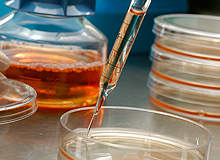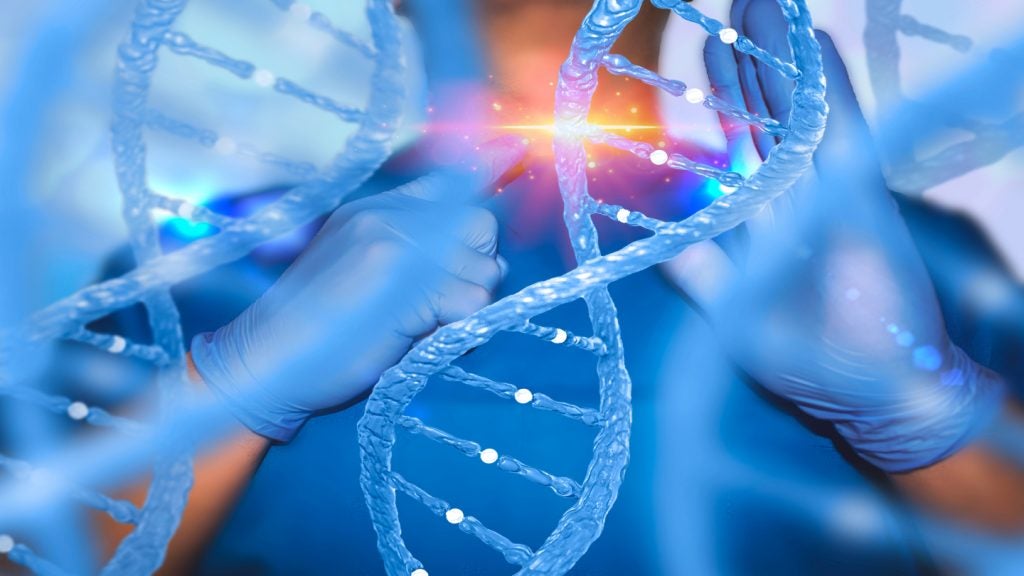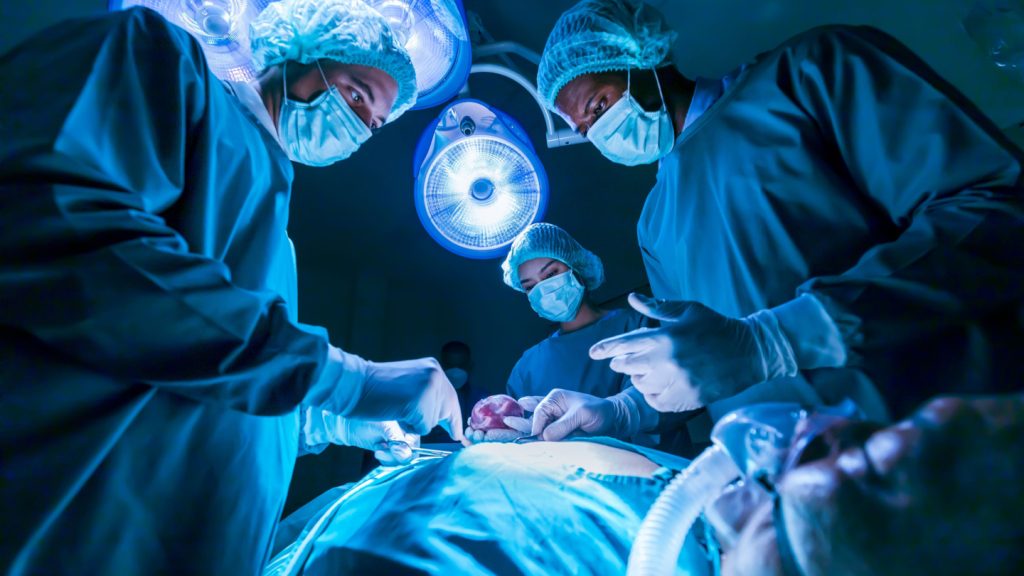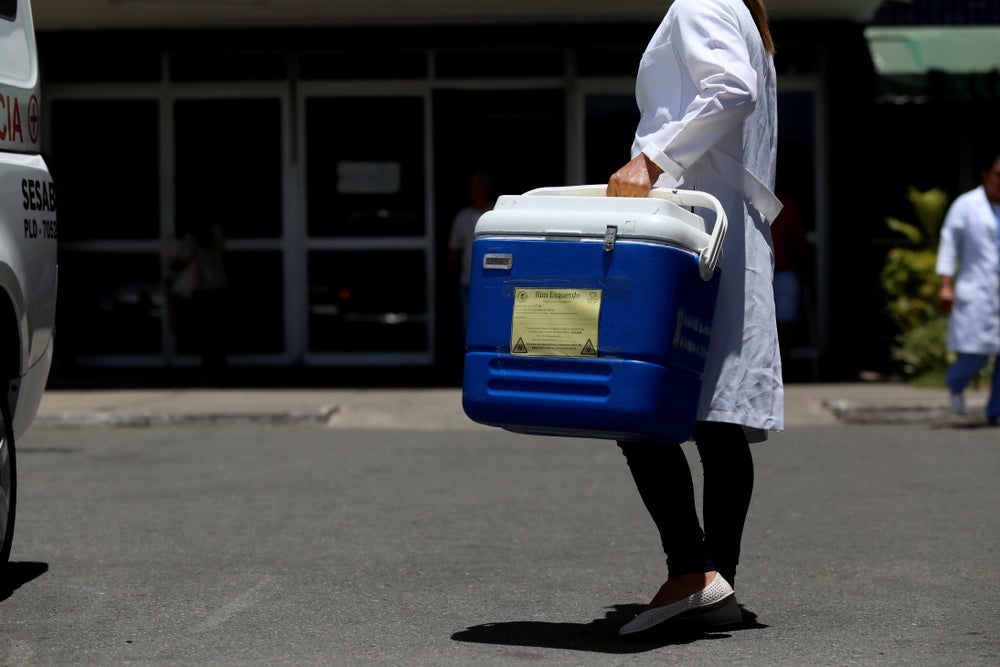
The need for organ and tissue donations in hospitals is greater than ever before. Patients often face year-long waiting lists to receive transplants, depending on the severity of their illness or injury. Hospitals, on the other hand, are struggling with the almost endless demand for the vital body parts, the bureaucracy of transplant waiting lists and – most of all – against time.
A new field in medical research, however, gives patients and hospitals a ray of hope: the creation of bio-artificial organs. What some see as ‘playing god’ or science fiction could actually be the breakthrough that those on waiting lists have been waiting for.
More than 110,000 people are waiting for organ transplants in the US alone. An average of 20 people on this list die and 75 patients receive transplants every day, according to the US Department of Health & Human Services (HHS). In the UK NHS figures show that more than 10,000 people currently need a transplant. Three of them die every day – simply because of the lack of organs available.
Human organs fail for a number of reasons: genetic defects, injuries and diseases. Transplantation to replace the damaged organs is an option but too often there are not enough donated organs to meet the surging need. In the future, people who need a body part or organ may get their own back: re-grown in the lab from their own cells.
Bio-artificial bladders
The first success in the field of growing new organs from scratch and transplanting them into humans was achieved by the Wake Forest Institute for Regenerative Medicine in Winston-Salem, North Carolina, US. 30 people have received lab-grown bladders developed by Anthony Atala and his army of scientists and doctors.
See Also:
Atala takes healthy cells from a patient’s bladder, allowing them to multiply freely in petri dishes before applying them to balloon-shaped scaffoldings, which are partly made of collagen, the protein found in cartilage. The scientists apply muscle cells on the outside and urothelial cells lining the urinary tract on the inside, then the new bladder is incubated at body temperature until the cells form a functioning tissue.
How well do you really know your competitors?
Access the most comprehensive Company Profiles on the market, powered by GlobalData. Save hours of research. Gain competitive edge.

Thank you!
Your download email will arrive shortly
Not ready to buy yet? Download a free sample
We are confident about the unique quality of our Company Profiles. However, we want you to make the most beneficial decision for your business, so we offer a free sample that you can download by submitting the below form
By GlobalDataThe whole process takes six to eight weeks and some patients have been living with the ‘manufactured’ bladders for around ten years – a long-term success for medicine. The creation of 22 other organs, including ears, skin, windpipes and livers, are already underway.
Crafting a human liver
Solid organs with lots of blood vessels, such as kidneys or livers, are harder to grow than hollow ones such as bladders. One approach has been made by the MRC Centre for Regenerative Medicine at the University of Edinburgh, where the principal investigator, David Hay, is working on the development of a bio-artificial liver from embryonic stem cells.
Hay’s vision is to create a artificial liver, working like a ‘sponge’ outside the body, to help to disburden the diseased patient’s organ. "The device allows the patient’s liver to focus on re-growing and regenerating, while our bio-artificial device outside the body takes the burden," explains David Hay. "It should be able to support the patient function and bridge the time until an organ becomes available or, in the best case scenario, we will actually remove the need for organ transplant and reduce the amount of people on the waiting list."
The bio-artificial devices are produced from embryonic stem cells, as well as induced pluripotent stem cells, which come from the patients themselves. Currently, the researchers mass-produce liver cells; in a next step they move these devices on to pre-clinical animal models in an effort to manufacture a functioning organ. "This is very important because if we manage to have success in these models we will be able to move towards the clinic in the future and engineer a human clinical trial," says Hay.
The reason to opt for a liver device that is outside the body is to reduce the risk for the patient. In case their body does not react well, the device can be unplugged. "That’s something you can’t do if you try to transplant cells into a patient’s organ because those cells could go all over the body and do things that they shouldn’t do. So this is why we have taken this very focused approach in having something that can provide support outside the body," explains Hay.
Although research and development could take years, David Hay is convinced that the livers could help overcome the problem of increasing demand for organs such as the liver.
"The long-term goal of what we are trying to do in the lab will be providing those meds in a timely fashion and hopefully reducing the costs of patient treatment in the long run," he says.
The engineered heart
One of the biggest challenges of creating bio-artificial organs might be to create a beating human heart. At the University of Minnesota, US, a research team led by Doris Taylor has made a breakthrough in developing a beating human heart using adult stem cells – a step the team hopes will revolutionise organ transplantation.
Taylor, the director of the Center for Cardiovascular Repair, already made news in 2008 when she rebuilt the hearts of rats using stem cells. The team had removed all the muscle cells, leaving just a scaffold of blood vessels and valves, a method called whole organ decellularisation.
"At this point we inject the scaffold with cells – your cells. We leave it in the lab for about a week and after that those cells actually begin to contract and the heart starts to pump," explains Taylor in a video on the University of Minnesota homepage.
"In theory, the decellularised organ is now itself on the way to becoming a new heart. It opens a notion that we can make any organ. At first we focused on the heart but our hope is when you need it we can make it," Taylor said.
At the beginning of April 2011, Taylor presented the latest findings of the team’s research at the annual conference of the American College of Cardiology in New Orleans, Louisiana, showing the development in creating a living human heart. The latest stage of the research took the method of decellularisation one step further and removed the muscle cells from a heart obtained from a human body. The team has then re-grown the muscle, using stem cells taken from a second person.
Using detergents, the researchers removed the muscle cells, leaving only an extracellular matrix. This matrix is then used by the stem cells to grow millions of new heart cells and to create a new heart muscle tissue. Even though the created heart is not strong enough to be transplanted, the researchers hope to have opened a door to building a living organ that could save millions of lives.
"We believe in giving nature the tools and getting out the way. So we took nature’s own building blocks and built a new organ. We’re not there yet but this is a first good step," said Taylor in the video.
Stem cell ethics
What goes hand in hand with new developments in the area of generating bio-artificial organs and overall with work involving embryonic stem cells is discussion about the ethics of the research.
While some European countries such as Sweden and the UK support research into the area, other countries including Germany, Italy, Finland, Greece, Ireland and the Netherlands prohibit or severely restrict the use of embryonic stem cells. The European Union has yet to issue consistent regulation with respect to stem cell research in the member states.
In the US, no law has ever banned the research but the government has placed numerous restrictions on funding and the use of stem cells. With President Barack Obama, a new era in research has begun. In February 2009, he signed a law that funds research into new lines of embryonic stem cells.
Criticism, however, comes from many religious groups, especially the Catholic Church, which believes that "innocent human creatures" are killed for the research with stem cells.
For David Hay, who works on the construction of bio-artificial livers, reasons for criticism can be found in the nescience of some members of the public. "It is usually a lack of communication or education if a member of the general public feels that way. The cells certainly don’t come from unborn babies. They precede that by a good number of weeks," he says. "But I would say that most people in the UK are very receptive to the research."
Hay believes hospitals could certainly benefit from research into artificial organs, but that it will take years until they are ready for being transplanted into patients’ bodies. "At the moment, we are at the start of this whole process. We are really just looking to understand how all the different cells in each organ work together to produce this organ that functions appropriately," he says.
"I think the real challenges for us are to be able to use completely synthetic approaches to generating organs and this is going to take the longest time," Hay reflects. "It could be as far away as 50 years before anyone could generate a proper organ for transplant that is wholly synthetic and does not have any cadaveric organ components."







